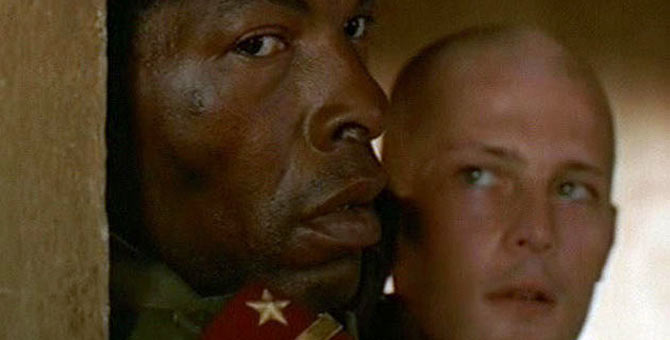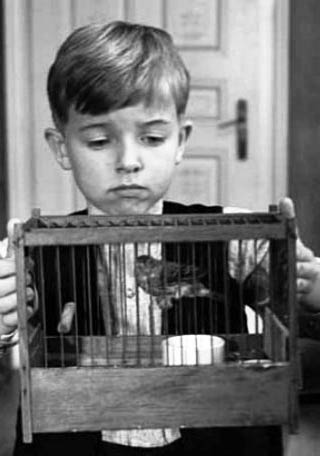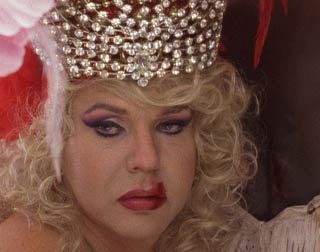Next story: Drew Barrymore's Female Fight Club
Cinephile Catnip
by Girish Shambu

A bumper crop in our backyard, at the Toronto International Film Festival
When the Toronto International Film Festival (TIFF) first hoisted its marquee in the mid 1970s, it called itself, in subtitle, the “Festival of Festivals.” By this, it meant that its mission was to be an “anthology festival.” It carefully scoured the programs of the world’s leading film festivals, like Cannes, Berlin, and Venice, and offered up a menu that collected the best work—“the greatest hits”—of those festivals. Thirty years later, TIFF still gathers the best films seen worldwide on the festival circuit but with a twist: It has since joined the ranks of those luminary festivals. Toronto is now unanimously considered to be the leading film festival in the Western Hemisphere. How lucky for us in Buffalo: All this excitement can be found in our very own backyard.
The movie I was anticipating with most eagerness at TIFF was the new one by French filmmaker Claire Denis. Her works, which include Chocolat and Beau Travail, are visually poetic, elliptical, and moody. Her newest, White Material, is inspired by a Doris Lessing novel, and is about a white plantation owner in post-colonial Africa (played by French super-actress Isabelle Huppert) who insists on holding on to her plantation when political violence erupts. In surprising contrast to Denis’ previous work, the new film is dense in narrative incident, heavy on exposition, and politically programmatic and unambiguous in story and character. Her usual editing rhythms, which are stately and elegant, have been replaced by a rushed, nervous skittishness. By painting in broad strokes and making quick, easy condemnations, Denis blunts her attack in this film. A world-class director makes the first misstep of her career.


The Austrian provocateur Michael Haneke (of Funny Games and Caché) has the deceptive bearing of a professor but a wonderfully sick mind. His unsubtle, aggressive morality tales are called sadistic by some, but their purpose is high-minded. He wants to slice open the corpse of Western civilization (as he might put it) and, in the clinical manner of a scientist, show you all the diseases hiding inside. His new film, The White Ribbon—which won the top prize at Cannes this year—is a suspense thriller about a small German town on the eve of World War I. A rash of small, mean-spirited terrorist acts break out; the children of the town come under suspicion. Underneath the cover of this domestic terrorism, Haneke reveals to us a “respectable” bourgeois community of narrow minds, vile prejudices, and a ruthless authority of the strong over the weak. (The weak in this tale are children, women, the working class, and strangers.)
France’s Bruno Dumont is also a world-class provocateur. His films—like the two best, The Life of Jesus and Humanity—contain savage acts of violence that explode at the least expected moments. But his latest work, Hadewijch, is a surprising departure. It’s a humbly told contemporary story of a girl who is in love with Christ, not just spiritually but even romantically and carnally. She identifies herself with the 13th century Belgian woman mystic Hadewijch, who wrote sensual, erotic poetry addressed to Christ. The romantic suffering and deep narcissism of this text-messaging, motorycle-riding Parisian teenager make for one of the most remarkable tales of unrequited love I have ever seen at the movies.
American independent filmmaker Todd Solondz is probably best known for the magnificently depressing Happiness (1998). He returned this year with Life During Wartime, a sequel of sorts to that film, with different actors (like the terrific Allison Janney from The West Wing) playing those characters. But the new movie’s a fiasco. The characters are paper-thin, the comedy fails to spark, and Solondz’s caricatures fall miserably flat. Too bad that the film is shot brilliantly on high-definition digital video: The creative and symbolic use of an IKEA-like color palette is wasted here.
One of the delights of TIFF is to run across a strong, stirring film that is so small and modest, from such a hidden corner of the world, that a film festival is often the only place one might lay eyes on it. Huacho, from Chile, directed by Alejandro Fernández Almendras, is just such a movie. The structure is simplicity itself: The movie is divided into four parts. Each part follows one member of a poor family (a schoolboy, his yogurt-selling grandmother, his servant-maid mother, and his landscaper grandfather) from morning to night on a single day. At the end of the film, they congregate around the dinner table and share a meal together. What volumes this low-key but rich film reveals about the thick textures of daily life in a Chilean small town. A small miracle.
The Portuguese-language To Die Like A Man, by João Pedro Rodrigues, was the most striking movie I saw in Toronto. It tells the heartbreaking tale of a transsexual cabaret artist, her junkie boyfriend, and her emotionally unhinged son. If all this sounds like the stuff of high drama, Rodrigues overturns our expectations by playing it as one long musical elegy. (Even the music inverts convention: Most of the songs in this film are simply hummed and sung by characters with no background musical accompaniment at all.) The film keeps shape-shifting, modulating deftly from “queer neo-realism” to magic realism, from domestic drama to musical, from “junkie film” to love story. These transformations never feel tricksy or facile, and are always underpinned by a genuine feeling of caring for the characters.
In an era that (justly) celebrates fluidity of gender, this movie dares to end in a gesture that doesn’t affirm that sexual freedom. Realities (socio-economic deprivation, technological limitations, private psychological confusions) get in the way; freedom remains, still, an elusive dream. And it is this sober, sad, and stubbornly tragic note that haunts us after the curtain comes down and we emerge from the cinema into the real world.
blog comments powered by Disqus|
Issue Navigation> Issue Index > v8n40 (week of Thursday, October 1, 2009) > Cinephile Catnip This Week's Issue • Artvoice Daily • Artvoice TV • Events Calendar • Classifieds |









 Current Issue
Current Issue